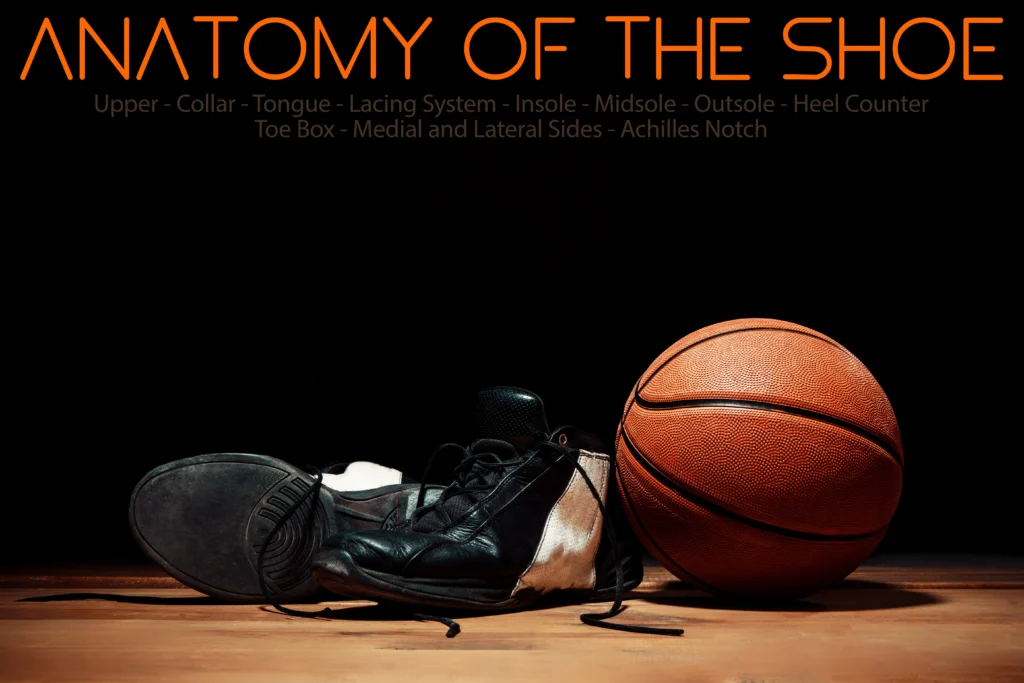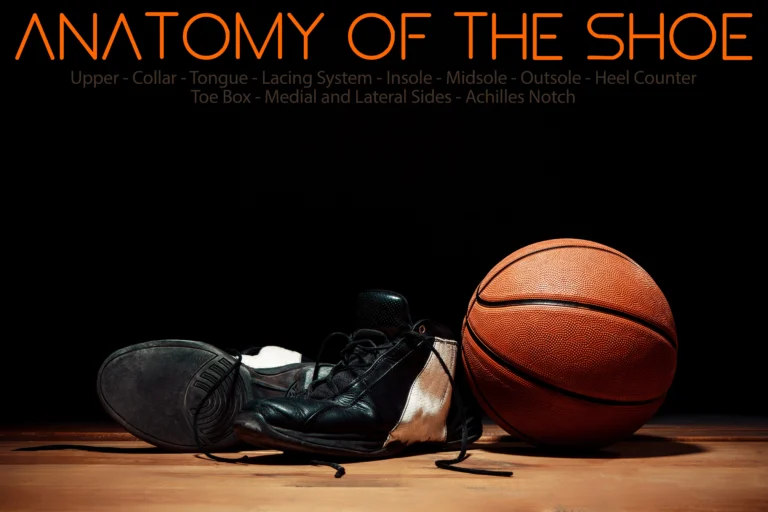Introduction
When it comes to dominating the basketball court, having the right gear is crucial. One of the most essential components of a basketball player’s equipment is their shoes. Understanding the anatomy of basketball shoes is vital for making an informed purchasing decision. In this comprehensive guide, we will delve deeper into the various parts that make up a basketball shoe, discussing the significance of each component and its impact on a player’s buying behavior.

Parts Of A Basketball Shoe
Upper
The upper, typically crafted from synthetic materials or leather, plays a pivotal role in providing support, stability, and breathability. The choice of material influences the overall feel and durability of the shoe. For instance, leather uppers offer a combination of durability and comfort, while synthetic materials often focus on lightweight performance. In the realm of mismatched basketball shoes, the upper undergoes specialized modifications, ensuring a tailored fit for each foot, exemplifying precision and comfort even in asymmetrical pairs
Collar
The collar, determining ankle support, directly influences a player’s movement and agility on the court. High-cut collars, as seen in the Adidas D.O.N. Issue #3, provide maximum ankle support, reducing the risk of sprains. Mid-cut collars offer a balance of support and flexibility, catering to various playing styles. Low-cut collars, such as those on the Puma Clyde Hardwood, prioritize freedom of movement, ideal for quick and agile players.
Tongue
The tongue’s role in protecting the foot from lace pressure is vital during intense gameplay. Look for shoes like the Under Armour Curry 8, which features a padded tongue, enhancing comfort during rapid movements and ensuring that the pressure from tightly laced shoes is minimized.
Lacing System
The lacing system’s impact on fit and support is undeniable. Traditional laces, as seen in the Jordan XXXV, offer a customizable fit, catering to players with wider feet. Alternative closure systems, such as BOA Fit or strap-based designs, provide convenience and a secure lockdown, influencing the buying decision of players seeking both performance and ease of use.
Insole
The insole’s material and thickness contribute to the overall comfort and shock absorption of the shoe. Removable insoles, like those found in the Kyrie 7, allow players to customize their footwear to accommodate personal preferences or orthotic inserts.
Midsole
The midsole’s role in cushioning and impact absorption is enhanced by technologies like air or gel units. Iconic shoes like the Adidas Harden Vol. 5 feature Boost technology in the midsole, providing responsive cushioning and energy return, influencing players who prioritize comfort and performance.
Outsole
The outsole, in direct contact with the court, determines traction and grip. Herringbone patterns, as seen in the Kyrie Irving line, offer multidirectional traction, suitable for players who make quick cuts and lateral movements on the court. Consider the type of court surface you’ll be playing on when evaluating the outsole material and pattern.
Heel Counter
A well-constructed heel counter, exemplified in the Air Jordan 36, not only offers stability but also prevents injuries by minimizing excessive movement. The design and material of the heel counter can impact a player’s confidence and performance.
Toe Box
The toe box’s importance lies in providing ample space to prevent discomfort or injury during sudden stops and direction changes. Shoes like the Reebok Question Mid prioritize a spacious toe box, accommodating various foot shapes while maintaining protection.
Medial and Lateral Sides
Different shoes incorporate features on the medial and lateral sides to cater to the unique demands of basketball movements. The Adidas Dame 7, for example, employs a lateral TPU overlay for enhanced stability during side-to-side movements.
Achilles Notch
The Achilles notch, present in shoes like the Under Armour Embiid 2, showcases a thoughtful design to alleviate pressure on the Achilles tendon, enhancing overall comfort and reducing the risk of discomfort or injury.
Conclusion
The depth of knowledge about the anatomy of basketball shoes empowers players to make choices that align with their playing style, preferences, and performance needs.
Each component serves a specific purpose, and understanding its impact can lead to a more informed decision. Remember, the right basketball shoe is not just a piece of equipment; it’s a strategic ally in your pursuit of excellence on the court.

